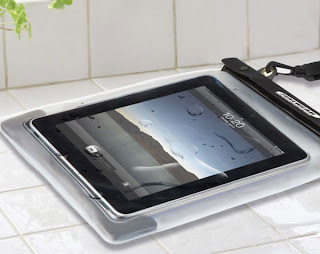1. XBOX : Project NATAL
Project Natal, a revolutionary new way to play: no controller required. See a ball? Kick it, hit it, trap it or catch it. If you know how to move your hands, shake your hips or speak you and your friends can jump into the fun -- the only experience needed is life experience
"This is a pivotal moment that will carry with it a wave of change, the ripples of which will reach far beyond video games" STEVEN SPIELBERG
"For us, this E3 is about breaking down barriers – between generations, between games and entertainment, and most importantly, between dreamers and the future – in a way only Xbox 360 can." DON MATTRICK
2. Ford's MyKEY: ALLOWS FLEET OWNERS TO CONTROL
SPEED AND RADIO VOLUME FOR SAFETY
Ford Motor Company is introducing an innovative new technology called MyKey that will help fleet owners encourage safer driving behavior by their vehicle operators.
The feature, which will debut on several popular Ford fleet vehicles in mid-2009 at no additional cost, allows fleet customers to limit top speed and radio volume, set speed warnings, encourage safety belt usage, and assure important safety systems remain engaged to help protect drivers and vehicle inventories.
“MyKey gives fleet owners peace of mind by providing a simple, affordable way to help reinforce safe driving policies and manage at-risk drivers,” said Gerry Koss, Ford’s fleet marketing manager. “For fleet owners, safe driving behavior by vehicle operators is a bottom-line issue.”
According to the National Highway Transportation Safety Administration (NHTSA), the average motor vehicle crash can cost an employer $16,500, while an on-the-job crash that results in injury can cost employers an average of $74,000. Motor vehicle accidents that result in the death of an employee or third party are even more costly. Traffic accidents are a leading cause of death for people who operate motor vehicles as part of their job.
Ford’s MyKey can help fleet owners better mitigate one of the most prevalent factors contributing to traffic crashes – excessive speed. NHTSA data shows that speeding is a contributing factor in 30 percent of all fatal crashes.
United States Infrastructure Company (USIC), a Carmel, Ind.-based utility services business that operates a fleet of 3,500 vehicles nationwide, could benefit from using MyKey, said Phil Samuelson, USIC purchasing and asset manager. The company uses many Ford trucks and SUVs, and its drivers put an average of 24,000 miles on each vehicle every year.
“Operating a fleet equipped with MyKey technology could be great for our business and our drivers,” Samuelson said. “By encouraging safety belt use and limiting the top speed and audio volume on our vehicles, we’d be better able to protect our employees and our fleet investment while potentially saving fuel, too.”
For MyKey, Ford improved an existing, proven technology – the SecuriLock™ passive anti-theft system – with software upgrades to develop a new unique feature for customers, said Jim Buczkowski, director, Electrical and Electronic Systems Engineering – the same team that developed SYNC in partnership with Microsoft.
3. Dual Touchscreen Laptop
It may be snoozin' time on the East Coast of America, but things are already getting heated in Hannover. Live from the CeBIT floor, we present to you ASUS Dual Panel touchscreen PC. The show models were still very much conceptual, with the hinges showing signs of imperfections and the interface not quite ready to be touched by onlookers. We did spot that the units on hand were humming along on Windows 7, though. The on-screen keyboard looked great from where we stood, but it's tough to say how hard it would be to get used to banging out dissertations on a flat panel. At any rate, feel free to browse the gallery below -- and stick around, we'll be bringing you lots, lots more where this came from
4. HTC EVO 4G Phone
What is 4G?
The technical definition of 4G has many ins and outs but here’s what it means to the phone user: high speed internet access on the move with your mobile phone. The switch to 4G has already started and as mobile phone operators migrate from 3G to 4G mobile data bandwidth will increase to such an extent you’ll be able to download a full length DVD in a few seconds. The new fourth generation mobile phone networks will offer much higher capacity and faster speeds than the current 3G mobile phone network. Data bandwidth will be around ten times the speed of 3G. Higher access speeds will mean that a greater range of multimedia, cell phone games and other applications will available – for example, streaming HD television on your mobile handset will become a reality.
5. Hydrogen Rulz: Hydrogen Powered Cellphone
Fuel cell maker Angstrom Power and cell phone maker Motorola have teamed up to create a prototype mobile phone that runs on a hydrogen fuel cell. Hydrogen is produced--by cracking water molecules--with a desktop fueling station and then inserted into a metal hydride storage container on the phone, says Aron Levitz, manager of business development for Angstrom. When the hydrogen molecules pass through a membrane in the fuel cell, electrons are stripped away and get diverted to run the phone.
The two companies are trotting the phone to various trade shows. Start-up Angstrom has received investments from of Chrysalix Ventures.



















